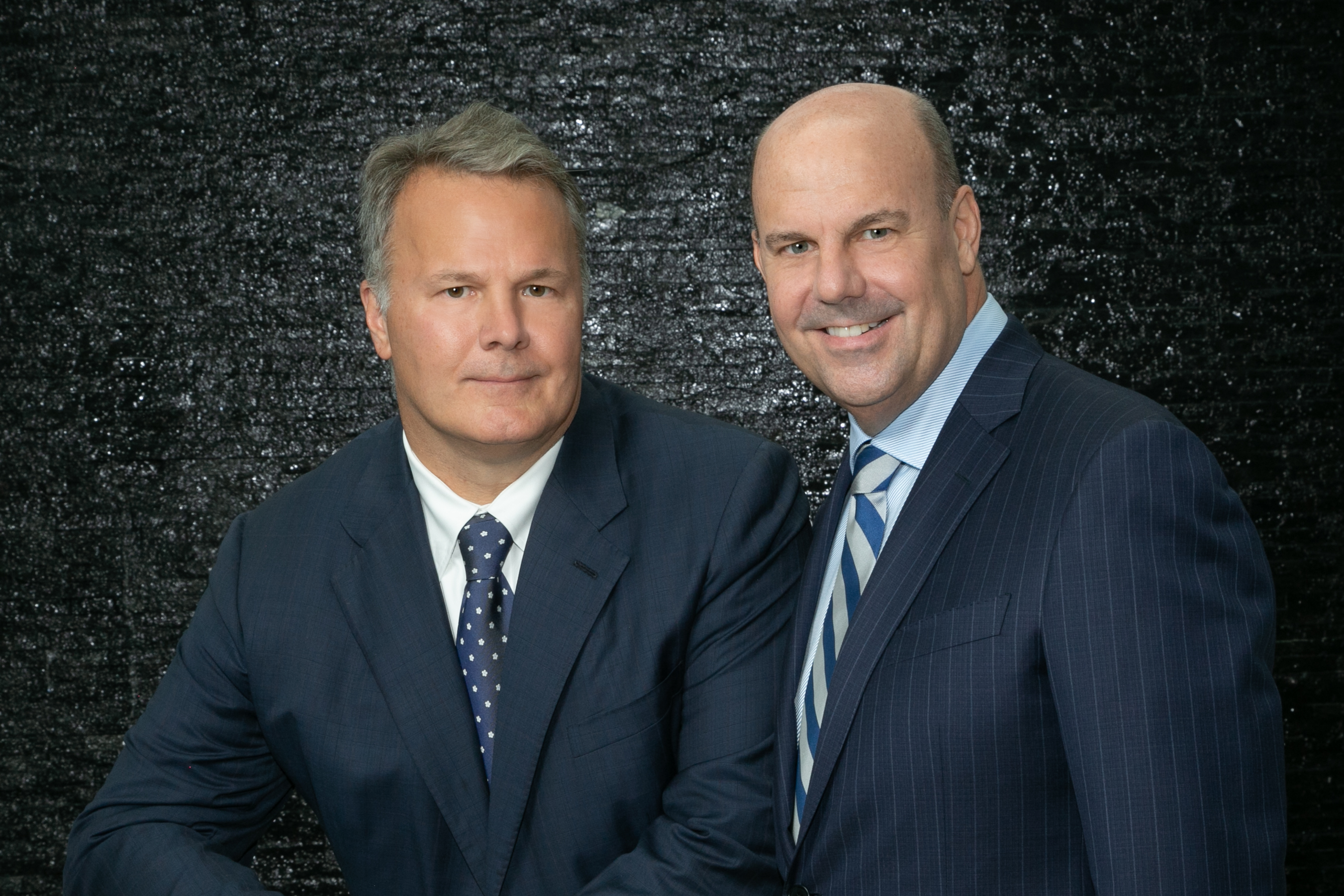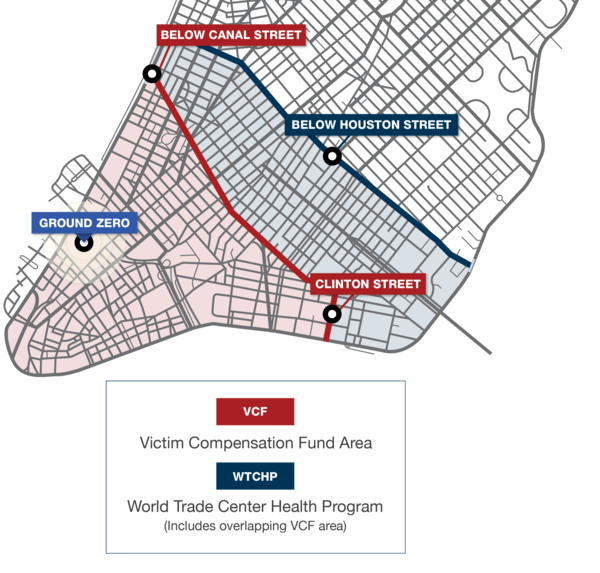What Is “The Gap”?
“The Gap” refers to the area of Lower Manhattan between Canal Street and Houston Street. This region is outside of the 9/11 Victim Compensation Fund’s exposure zone, but within the World Trade Center Health Program’s coverage area, which includes all of lower Manhattan south of Houston Street. That means residents, workers, and students who were between these two streets during or after the attacks may qualify for free medical care through the WTCHP, but do not qualify for financial compensation through the VCF because the VCF’s coverage area (the “Crash Site”) extends only to Canal Street. However, in practice, Hansen & Rosasco have successfully obtained VCF awards of compensation for many people living, working, or going to school in the area between Canal and Houston Streets.
The Impact of 9/11 on Those Living or Present in “The Gap”
Although the Gap lies just north of the VCF’s designated exposure area, environmental monitoring data and eyewitness accounts confirm that the toxic dust and smoke reached well beyond Canal Street. Many residents remember thick gray residue coating cars, window sills, fences, and sidewalks for weeks after the attacks.
Schools, daycares, and businesses in neighborhoods in the Gap, such as SoHo and the South Village, remained open in the aftermath, unknowingly exposing thousands of adults and children to airborne carcinogens and fine particulate matter.
Health Conditions Common for People in “The Gap” During and Following 9/11
Over the past two decades, many individuals who lived or worked between Canal and Houston Streets have been diagnosed with 9/11-related health conditions. These include both physical and mental health conditions recognized by the WTCHP and eligible for certification:
- Respiratory and airway diseases such as chronic bronchitis, COPD, and asthma
- Aerodigestive disorders like GERD and chronic laryngitis
- Cancers linked to 9/11 exposure, including lung, thyroid, prostate, and breast cancers
- Mental health conditions, such as depression, anxiety, and PTSD
Even if an illness developed several years later, individuals may still qualify for certification through the WTCHP if they can demonstrate presence in the exposure area during the applicable time frame.
Which People in “The Gap” Qualify for Compensation?
Eligibility depends on which federal program applies: the WTCHP for healthcare or the VCF for financial compensation. For the WTCHP, anyone who was south of Houston Street during the qualifying period and who meets the exposure duration requirements may qualify for free lifetime medical monitoring and treatment through the WTCHP.
This is where experienced legal help becomes crucial. The attorneys at Hansen & Rosasco, LLP have worked extensively with claimants in this exact situation, using thoughtful evidence strategies, including affidavits, employment records, school enrollment documents, and even ATM receipts, to show that a claimant was below Canal Street and successfully awarded VCF compensation.
WTCHP vs. VCF Eligibility Requirements
WTCHP and VCF benefits are available to those who have developed 9/11-related health conditions– including those who lived, worked, or attended school in lower Manhattan. While the two programs were both created by the James Zadroga 9/11 Health and Compensation Act, their purposes and eligibility requirements differ:
|
Program
|
Purpose
|
Coverage Area
|
Presence in Exposure Zone
|
Deadlines
|
|
WTCHP
|
Provides medical monitoring, testing, and treatment
|
South of Houston Street
|
Between September 11, 2001 and July 31, 2002
|
No formal deadline but timely registration is recommended
|
|
VCF
|
Provides financial compensation for economic and non-economic losses
|
South of Canal Street
|
Between September 11, 2001 and May 30, 2002
|
Register by the applicable deadline and file a claim by October 1, 2090
|
To file a VCF claim, an individual must first have their condition certified by the WTCHP. Once certified, a lawyer can help build a case for those who lived or worked in the Gap, showing that exposure was within the VCF’s Crash Site Area to warrant inclusion and a financial award.
Complications for People in “The Gap” Filing for Compensation
Because of the overlapping but inconsistent boundaries, individuals in “The Gap” often face challenges proving their eligibility for the VCF. Common complications include:
- Inconsistent documentation: Some claimants lack employment or residential records from 2001–2002.
- Confusion about coverage: Many assume that WTCHP approval automatically means VCF eligibility.
- Denials due to location: Initial claims may be rejected if the claimant lists the basis of their 9/11 exposure, their home, workplace, or school located north of Canal Street.
Hansen & Rosasco, LLP has extensive experience appealing and overturning such denials. By presenting detailed evidence, such as maps, documentary evidence, and personal affidavits, our team has obtained compensation for many individuals who lived, worked, or went to school between Canal and Houston Streets.
How Our VCF Lawyers Can Guide You Through the Process
For individuals who lived, worked, or were otherwise present in the Gap, a successful claim often depends on how well the case is documented and presented. Our 9/11 attorneys can:
- Confirm your eligibility for the WTCHP and VCF
- Assist with proof of presence and medical certification
- Gather evidence showing that you lived, worked, or attended school in the area
- File your VCF registration and claim before applicable deadlines
- Appeal any denials or errors in the claims process
We understand how confusing the overlapping program boundaries can be, and how daunting it can be to receive a denial. Our attorneys are here to guide you through the process.



